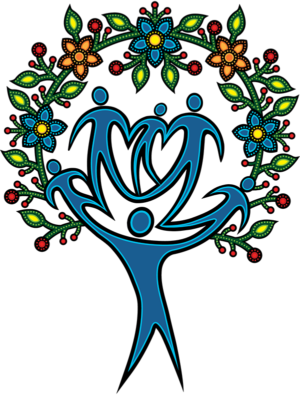Sexual and Gender Diverse (SGD) Youth Mentoring Guide
There is a growing awareness that Sexual and Gender Diverse In-person mentoring relationships can serve an important role for SGD youth, as they would be well-positioned to offer ongoing support to the needs of youth, as they navigate through phases of exploring, accepting, and sharing their identity with others. Given that SGD youth face unique challenges, and there is a strong belief that mentors can help them positively navigate these challenges, many organizations have started taking an interest in developing new programs or improving existing programming to address the unique needs of SGD youth. This guide was created for BGCBigs (Boys & Girls Clubs and Big Brothers Big Sisters) Edmonton as a resource for the Alberta Mentoring Partnership. However, the guide can be a reference for youth and community organizations in Alberta and Canada who are interested in this topic.
The guide contains recommendations and best practices for working with SGD youth, and highlights program design considerations. The program design elements in this manual could be tailored for use in existing mentorship programs that wish to serve SGD youth more effectively or could provide the basis for standalone mentorship programs principally focused on SGD youth and mentors.
How Mentorship Programs Can Benefit SGD Youth:
Research into the effectiveness of SGD youth mentoring programs is still in its infancy. Therefore, there are only a few studies regarding rigorous measurement of program effectiveness. The National Mentoring Resource Center, in association with Big Brothers Big Sisters America has made the most extensive efforts to pilot and measure SGD youth mentoring programs to date, however they have not published their outcomes yet.
Initial research suggests the following positive impacts on mentees, mentors, and communities:
-
In-person mentoring relationships may serve an important protective role for SGD youth, helping them to confront challenges such as lack of acceptance from peers and parents.
-
Informal mentoring relationships with adults may promote positive educational outcomes among SGD youth.
-
Mentors who take youth-centered approaches that are inclusive of the experiences and needs of SGD youth may foster greater benefits.
-
Mentors appear well-positioned to offer ongoing support as the youth navigate through phases of exploring, accepting, and sharing their identity with others.
-
Mentors who advocate may be able to support for SGD youth in ways that mitigated risks associated with stigma and victimization.
-
Youth-serving agencies with inclusive and safe programming appear to offer additional levels of protection for SGD youth against risks, such as depression and suicide.
Because SGD youth mentoring programs are so new, this guide recommends that organizations include a research component into the program design.
Specific uses of this manual could include:
-
Improving existing youth mentorship programs to address the specific needs and challenges of SGD youth.
-
Creating a new mentoring program targeted specifically for SGD youth, and SGD-identified mentors.
-
Advice on supporting mentors who have been matched with SGD youth, and tips for improving their skills and the quality of their interactions with mentees.
-
Understanding Canadian legal policy for youth- centered programs, and how it relates to the design of mentoring programs for SGD youth.
-
Educating staff and community stakeholders on the issues SGD youth face, and how these could affect mentoring programs.
-
Guidance for quality assurance program measurements for SGD Youth Mentoring Programs.
Thank you/Supported By
- The Pride Center of Edmonton
- Government of Alberta
- BGCBigs SGD working group
- BBBS Calgary
- BBBS Winnipeg
- MENTOR

